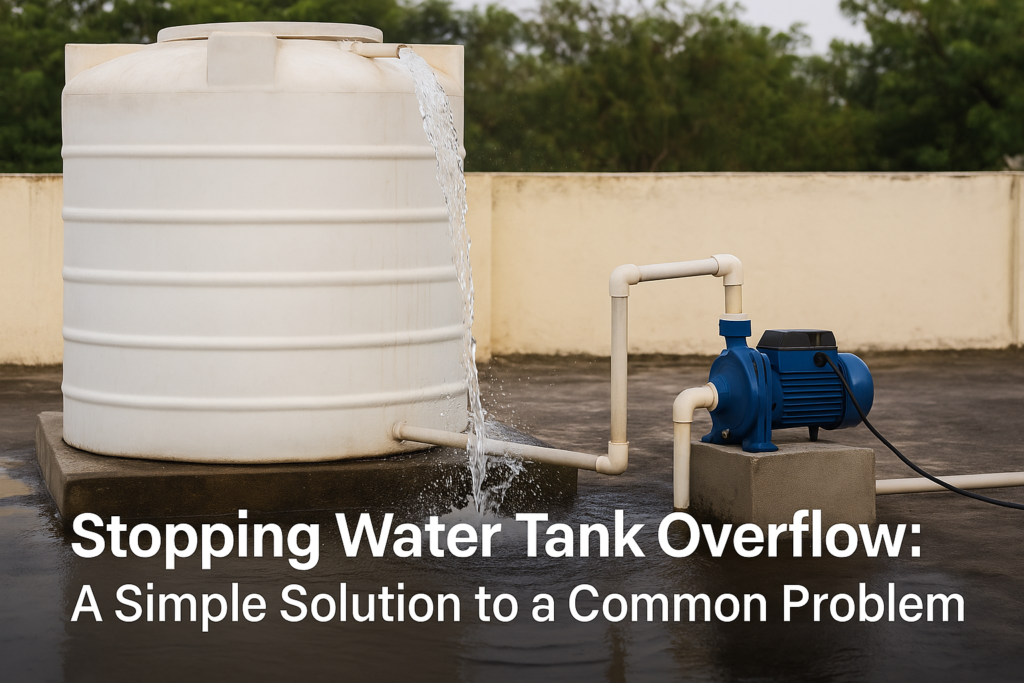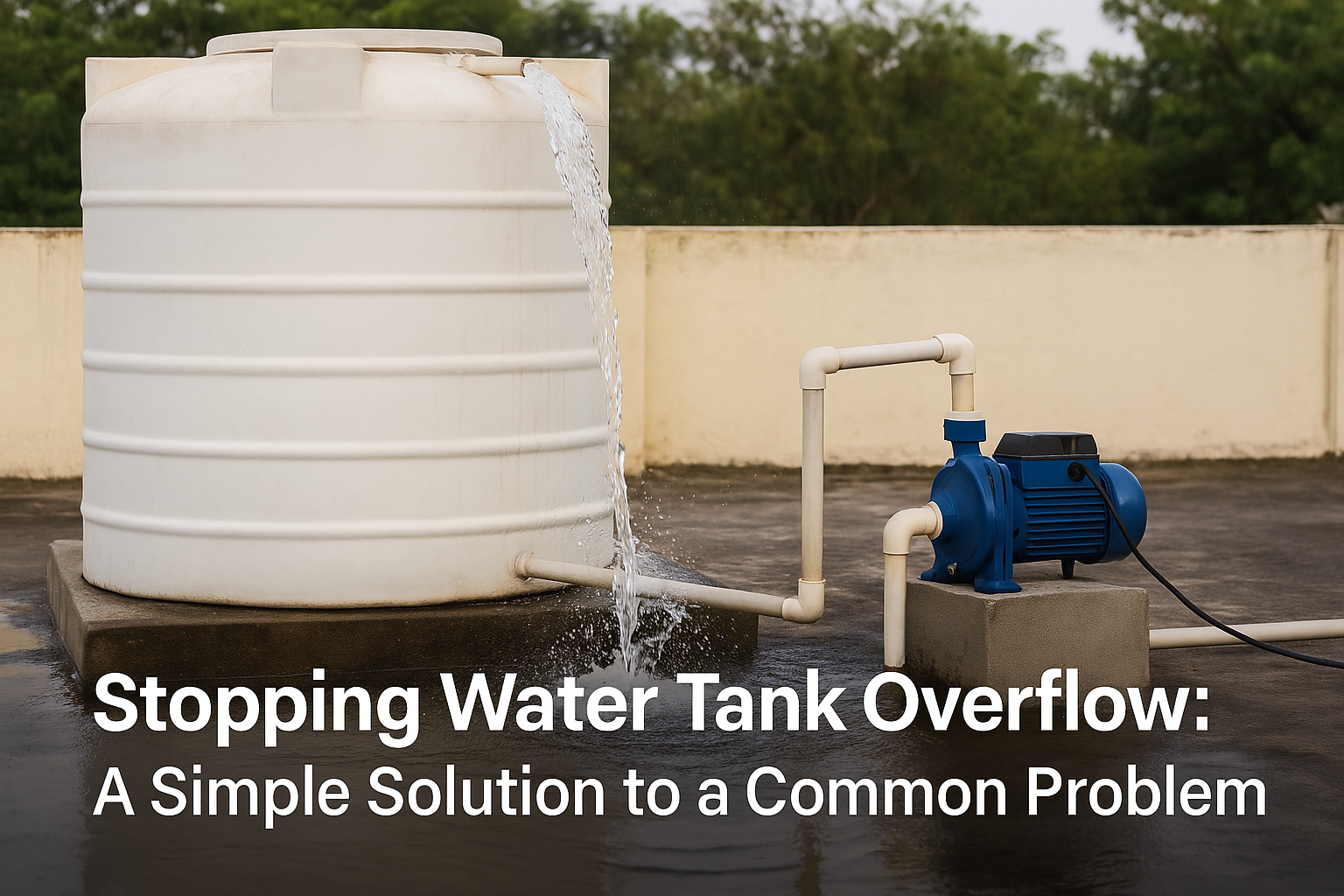What are the causes of water tank overflow and their solutions
Understanding the Causes of Water Tank Overflow and How to Prevent It
Water is one of the most essential resources for life. With increasing water scarcity in many parts of the world, it becomes even more important to use it wisely. One of the most common problems in households and buildings is water tank overflow. This not only leads to wastage of precious water but also damages property and increases utility costs. Fortunately, understanding the causes of this issue can help us implement effective solutions to prevent it.

Common Causes of Water Tank Overflow
Human Error
The most common cause of overflow is simply forgetting to turn off the motor or water pump. In many homes, the water tank is filled manually using electric pumps. If someone switches on the motor and forgets about it, the tank fills up and eventually overflows.
Absence of Monitoring Systems
Most traditional water tanks lack any kind of indicator or monitoring system to show how much water is inside. Without this feedback, it becomes difficult to judge when to turn the pump off, especially if the tank is located on the roof or in a hidden place.
Faulty Float Valves
Float valves are mechanical devices used to regulate the water level in tanks. When water reaches a certain height, the float rises and shuts off the inlet. If this valve malfunctions or gets stuck, it can lead to continuous inflow, resulting in overflow.
Water Supply Fluctuations
In areas with inconsistent water supply, people often turn on the motor and wait for water to come. When water pressure finally returns, the motor may start filling the tank, and if no one is present, overflow is likely.
Poor Tank Design or Maintenance
Tanks that are not properly maintained may have blocked or malfunctioning overflow pipes. Sometimes, sediment buildup, algae, or debris can clog these pipes, making it difficult for excess water to drain out safely.
Malfunctioning Automatic Controllers
Some households use automatic water level controllers to manage tank filling. However, if the device is outdated or not installed properly, it may fail to shut off the pump at the right time.
Solutions to Prevent Water Tank Overflow
Preventing overflow is not just about saving water—it’s also about preventing structural damage, reducing energy bills, and promoting responsible living. Here are some effective solutions:
Install a Water Level Alarm
A water level alarm is a simple, cost-effective device that uses sensors inside the tank to detect water levels. When the water reaches a set limit, the alarm rings, alerting you to switch off the pump. These alarms are widely available, easy to install, and require minimal maintenance.
Use Automatic Water Level Controllers
Automatic water level controllers go a step further by turning the motor on or off without human intervention. These systems use sensors to detect when the tank is low and activate the pump, and they automatically shut it off when the tank is full. This is one of the best long-term solutions for avoiding human error.
Maintain Float Valves
If you are using a float valve system, ensure it is maintained regularly. Clean the valve to prevent sediment buildup, and check its movement to make sure it is not stuck. A properly functioning float valve is very reliable for controlling water levels.
Use Smart Monitoring Systems
In modern homes, smart tank monitoring systems are becoming popular. These devices not only alert you when the tank is full, but also send updates to your smartphone, allowing you to control the motor remotely. Although these systems are a bit more expensive, they are perfect for tech-savvy users or people living in multi-story buildings.
Install Overflow Pipes
Every tank should have an overflow pipe installed at the correct height. This pipe directs excess water safely away from the tank and prevents it from spilling over the walls. It’s a basic but effective way to avoid damage to your building.
Regular Inspection and Maintenance
Performing routine inspections of the tank, valves, pipes, and controllers helps identify issues early. Clear out debris, check for leaks, and replace any faulty parts. Preventive maintenance goes a long way in keeping your system efficient.
The Bigger Picture: Why It Matters
Preventing water tank overflow isn’t just a matter of convenience—it’s about responsible water usage. In countries facing water scarcity, even a few liters wasted daily can add up to significant losses. Moreover, overflow leads to:
- Higher Electricity Bills (due to unnecessary motor usage)
- Structural Damage (water seeping into walls, roofs, or foundations)
- Health Risks (standing water promotes mosquito breeding)
- Unpleasant Mess (water leaking down buildings or flooding rooftops)
By taking proactive steps to address the root causes of tank overflow, households can significantly reduce these problems while also contributing to a more sustainable future.
Conclusion
Water tank overflow is a preventable issue that many people overlook. Whether caused by forgetfulness, faulty parts, or lack of proper systems, the outcome is the same—wasted water, damaged property, and added expenses. Thankfully, the solutions are easy to implement and range from low-cost alarms to advanced smart controllers. With just a little effort and investment, we can ensure that every drop counts.
Thank you very much visiting my website get more Contenthttp://Click Here
